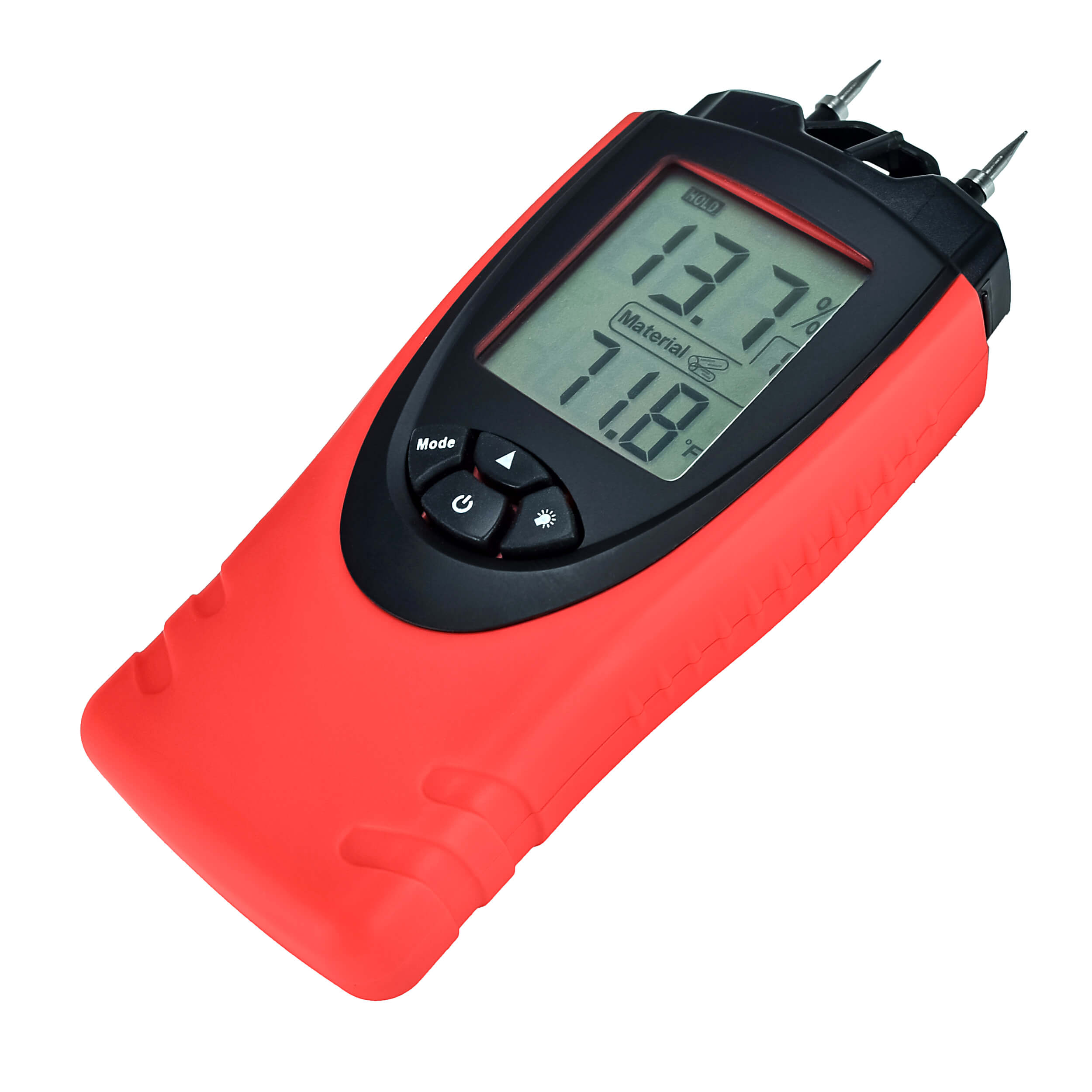Exactly How a Moisture Meter Can Improve Your Building And Construction Projects and Avoid Damages
Exactly How a Moisture Meter Can Improve Your Building And Construction Projects and Avoid Damages
Blog Article
Explore the World of Moisture Meters: Whatever You Required to Know
In the realm of dampness meters exists a globe of precision and usefulness that commonly goes unnoticed. Comprehending just how moisture meters operate, the various kinds readily available, and their varied uses can drop light on their value in guaranteeing quality and performance.
Exactly How Moisture Meters Work
Moisture meters run by determining the electric conductivity or capacitance of products to establish the moisture material present. These meters are invaluable devices across numerous sectors, consisting of agriculture, woodworking, and building and construction. By utilizing different methods such as pinless or pin-type technology, dampness meters offer exact analyses that aid specialists make notified decisions.
Pin-type dampness meters function by inserting the sharp pins into the material being tested. On the other hand, pinless wetness meters use electromagnetic signals to scan a bigger location without causing any kind of damages to the product's surface.
No matter the technique made use of, moisture meters play a vital duty in protecting against concerns such as mold growth, structural damages, or product problems brought on by excess wetness. Comprehending exactly how these meters job is necessary for making sure the quality and integrity of products in different applications.
Sorts Of Moisture Meters
Given the important duty moisture meters play in various markets, it is necessary to recognize the various types available to professionals for precisely evaluating dampness levels - Moisture Meter. There are primarily two major types of wetness meters: pinless and pin-type moisture meters

On the various other hand, pinless wetness meters use electro-magnetic sensor plates to scan a bigger location of the material without triggering any damages. This type is ideal for swiftly scanning big areas and is commonly utilized for floor covering, walls, and ceilings. Pinless meters are practical for taking readings on completed surfaces without leaving any visible marks.
Both kinds of wetness meters have their advantages and are picked based on the particular requirements of the work available. Recognizing the distinctions between these kinds is essential for specialists to make exact moisture evaluations.
Applications Throughout Industries
With diverse functionalities, wetness meters locate prevalent application throughout numerous sectors, helping experts in making sure optimum problems for materials and structures. In the agriculture sector, wetness meters are invaluable for establishing the wetness web content in grains, seeds, and hay, ensuring high quality control and avoiding mold and mildew development. Building and construction professionals count on dampness meters to examine the wetness levels in structure products like timber, drywall, and concrete, which is crucial for maintaining top article structural stability and stopping issues like rot or mold and mildew. The floor covering industry Continued makes use of dampness meters to measure the wetness material in subfloors before mounting various flooring coverings, protecting against pricey damages because of excess moisture. Furthermore, in the food sector, wetness meters are utilized to check and regulate moisture levels in items such as grains, nuts, and dried out fruits to preserve quality and high quality. Additionally, moisture meters play a vital function in the remediation and damage control sector by assisting professionals recognize and attend to water damages in structures quickly. Throughout these diverse sectors, wetness meters are essential devices for making sure the top quality, safety and security, and long life of numerous materials and products.
Tips for Using Wetness Meters
Use the wetness meter's calibration setups to guarantee exact analyses when measuring the moisture content in different products. Additionally, make sure the meter is set to the right dampness variety for the product you are gauging to acquire the most exact outcomes.
When utilizing a pin-type wetness meter, put the pins to the proper depth recommended for the product being checked. This guarantees that the moisture readings are drawn from the right depth within the material, giving an extra precise depiction of its moisture material. For pinless wetness meters, keep in mind to maintain correct contact with the product's surface area to obtain trusted readings.
Routinely inspect and change the batteries in your moisture meter to protect against incorrect readings because of low power. When not in use to prolong its lifespan and keep read what he said its accuracy, Store the meter in a risk-free and dry area. By following these suggestions, you can optimize the performance of your wetness meter and obtain exact moisture web content measurements throughout different products.
Maintenance and Calibration
To make sure the precision of wetness material dimensions, normal upkeep and calibration of the moisture meter are important action in its correct performance. Maintenance entails keeping the dampness meter totally free and tidy from particles that can influence its readings. It is very important to follow the maker's guidelines for cleaning to stop damage to the gadget. In addition, normal calibration is needed to validate the accuracy of the analyses. Calibration readjusts the dampness meter to guarantee that it gives consistent and trusted results.
Calibration ought to be carried out regularly, especially if the wetness meter is utilized frequently or in vital applications where specific dimensions are called for. By calibrating the wetness and preserving meter regularly, users can trust the accuracy of the wetness material measurements obtained.
Conclusion

In verdict, moisture meters play an important function in numerous sectors by properly measuring the wetness web content of materials. Comprehending exactly how these devices work, the various kinds offered, and proper maintenance and calibration are essential for acquiring reputable outcomes. Whether in construction, agriculture, or manufacturing, making use of dampness meters helps ensure top quality control and effectiveness in procedures.

In verdict, wetness meters play an important duty in different sectors by accurately measuring the wetness content of materials.
Report this page